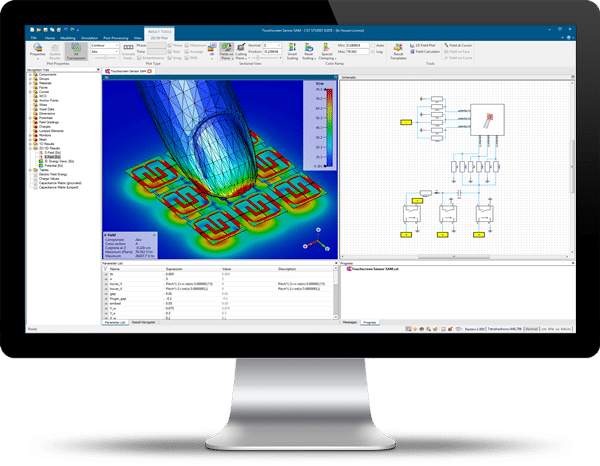Broad Electromagnetic Simulation
CST analyses Electromagnetic systems from statics and low-frequency to high-frequency range, in a fully parametric design environment.
Specialised Solvers
CST holds specialised solvers for applications such as motors,
circuit boards, cable harnesses and filters.
High Performance Computing
CST allows workstation multithreading, GPU and hardware
acceleration, and cluster distributed computing and MPI.
Coupled Simulation
CST provides coupled simulation: System-level, hybrid,
multiphysics, thermal, EM/circuit co-simulation, and co-simulation with Abaqus
CST Studio Suite
A market-leading electromagnetic field software
Extended Solvers in a single user interface
Electromagnetic field solvers for applications across the EM spectrum are contained within a single user interface in CST Studio Suite. The solvers can be coupled to perform hybrid simulations, giving engineers the flexibility to analyze whole systems made up of multiple components in an efficient and straightforward way.
Co-design with other SIMULIA software applications
CST allows to be used in co-design with other SIMULIA products so that EM simulation can be integrated into the design flow and drives the development process from the earliest stages.
Extended applications
Common subjects of EM analysis include the performance and efficiency of antennas and filters, electromagnetic compatibility and interference (EMC/EMI), exposure of the human body to EM fields, electro-mechanical effects in motors and generators, and thermal effects in high-power devices.
CST Studio Suite capabilities in Electromagnetic (EM) analysis
Diverse industry specific capabilities to capture and predict many different behaviours.
Electromagnetic Simulation Solvers
CST solver capabilities for many different purposes
CST EM Solvers
CST Studio Suite gives customers access to multiple electromagnetic (EM) simulation solvers which use methods such as the finite element method (FEM) the finite integration technique (FIT), and the transmission line matrix method (TLM). These represent the most powerful general purpose solvers for high frequency simulation tasks. Additional solvers for specialist high frequency applications such as electrically large or highly resonant structures complement the general purpose solvers. CST Studio Suite includes FEM solvers dedicated to static and low frequency applications such as electromechanical devices, transformers or sensors. Alongside these are simulation methods available for charged particle dynamics, electronics, and multiphysics problems.
The seamless integration of the solvers into one user interface in CST Studio Suite enables the easy selection of the most appropriate simulation method for a given problem class, delivering improved simulation performance and unprecedented simulation reliability through cross-verification.
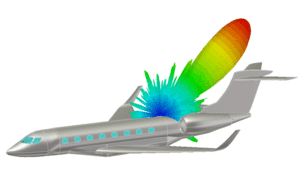
High Frequency Solvers
Asymptotic
The CST Asymptotic Solver is a ray tracing solver which is efficient for extremely large structures where a full-wave solver is unnecessary. The Asymptotic Solver is based on the Shooting Bouncing Ray (SBR) method, an extension to physical optics, and is capable of tackling simulations with an electric size of many thousands of wavelengths. Applications like; electrically very large structures, installed performance of antennas, scattering analysis.
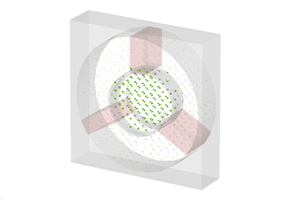
High Frequency Solvers
Eigenmode
The CST Eigenmode Solver is a 3D solver for simulating resonant structures, incorporating the Advanced Krylov Subspace method (AKS), and the Jacobi-Davidson method (JDM). Common applications of the Eigenmode Solver are highly-resonant filter structures, high-Q particle accelerator cavities, and slow wave structures such as travelling wave tubes. The Eigenmode Solver supports sensitivity analysis, allowing the detuning effect of structural deformation to be calculated directly. Applications like; filters, Cavities, metamaterials and periodic structures.
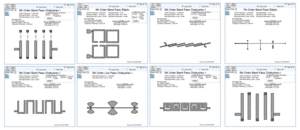
High Frequency Solvers
Filter Designer 2D
A design tool offering a range of options for filter implementation in various planar technologies, such as microstrip, stripline and suspended microstrip. It offers different configurations using stubs, stepped impedance lines, coupled-resonators and lumped component circuits, where SMD libraries can be selected and inter-connects automatically created. With the push of a button the model is created on the schematic with the appropriate optimizer setup. In addition a full-wave simulation project is created from the building blocks and includes the solver setup and all parameters needed for the final tuning steps. Applications like; planar filters, circuit filters.
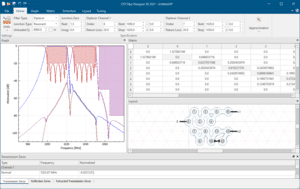
High Frequency Solvers
Filter Designer 3D
A synthesis tool for designing bandpass and diplexer filters, where a range of coupling matrix topologies are produced for the application in arbitrary coupled-resonator based technology. It also offers a choice in building blocks to realize the 3D filter by making use of the Assembly Modelling. From the Component Library the user can choose between combline/interdigital coaxial cavities and rectangular waveguides, or simply define customized building blocks of any type of single-mode technology (e.g. SIW or dielectric pucks). Additional functionality includes the coupling matrix extraction that can directly be used as a goal for optimization of a simulation model, or for assistance in tuning complex hardware via real-time measurements using a network analyzer. Applications like; cross-coupled filters for different electromagnetic technologies (e.g. cavities, microstrip, dielectrics), assistive tuning for filter hardware (with vector network analyzer link).
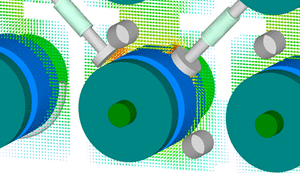
High Frequency Solvers
Frequency Domain
The CST Frequency Domain Solver is a powerful multi-purpose 3D full-wave solver, based on the finite element method (FEM), that offers excellent simulation performance for many types of component. Because the Frequency Domain Solver can calculate all ports at the same time, it is also a very efficient way to simulate multi-port systems such as connectors and arrays. The Frequency Domain Solver includes a model-order reduction (MOR) feature which can speed up the simulation of resonant structures such as filters. Applications like; general high-frequency applications using small-to-medium sized models, resonant structures, multi-port systems, 3D electronics.
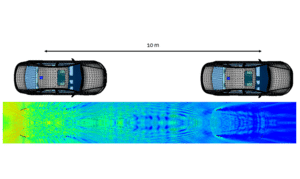
High Frequency Solvers
Integral Equation
The CST Integral Equation Solver is a 3D full-wave solver, based on the method of moments (MOM) technique with multilevel fast multipole method (MLFMM). The Integral Equation Solver uses a surface integral technique, which makes it much more efficient than full volume methods when simulating large models with lots of empty space. The Integral Equation Solver includes a characteristic mode analysis (CMA) feature which calculates the modes supported by a structure. Applications like; high-frequency applications using electrically large models, installed performance, characteristic mode analysis
High Frequency Solvers
Multilayer
The CST Multilayer Solver is a 3D full-wave solver, based on the method of moments (MOM) technique. The Multilayer Solver uses a surface integral technique and is optimized for simulating planar microwave structures. The Multilayer Solver includes a characteristic mode analysis (CMA) feature which calculates the modes supported by a structure. Applications like; MMIC, feeding networks, planar antennas.
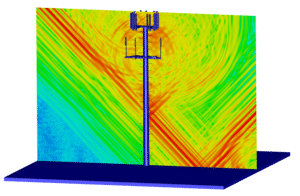
High Frequency Solvers
Time Domain
The CST Time Domain Solver is a powerful and versatile multi-purpose 3D full-wave solver, with both finite integration technique (FIT) and transmission line matrix (TLM) implementations included in a single package. The Time Domain Solver can perform broadband simulations in a single run. Support for hardware acceleration and MPI cluster computing also makes the solver suitable for extremely large, complex and detail-rich simulations. Applications like; general high-frequency applications using medium-to-large models, transient effects, 3D electronics
High Frequency Solvers
Hybrid Solver Task
The CST Hybrid Solver Task allows the Time Domain, Frequency Domain, Integral Equation and Asymptotic Solvers to be linked for hybrid simulation. For simulation projects that involve very wide frequency bands or electrically large structures with very fine details, calculations can be made much more efficient by using different solvers on different parts. Simulated fields are transferred between solvers through field sources, with a bidirectional link between the solvers for more accurate simulation. Applications like; small antennas on very large structures, EMC simulation, human body simulation in complex environments.
Low Frequency Solvers
Electrostatic
The CST Electrostatic Solver is a 3D solver for simulating static electric fields. This solver is especially suitable for applications such as sensors where electric charge or capacitance is important. The speed of the solver also means that it is very useful for optimizing applications such as electrodes and insulators. Applications like; sensors and touchscreens, power equipment, charged particle devices and X-ray tubes
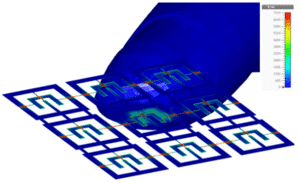
Low Frequency Solvers
Stationary Current
The CST Stationary Current Field Solver is a 3D solver for simulating the flow of DC currents through a device, especially with lossy components. This solver can be used to characterize the electrical properties of a component that is DC or in which eddy currents and transient effects are irrelevant. Applications like; high-power equipment, electrical machines, PCB power distribution network
Low Frequency Solvers
Magnetostatic
The CST Magnetostatic Solver is a 3D solver for simulating static magnetic fields. This solver is most useful for simulating magnets, sensors, and for simulating electrical machines such as motors and generators in cases where transient effects and eddy currents are not critical. Applications like; sensors, electrical machines, particle beam focusing magnets.
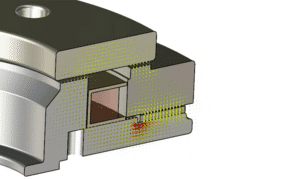
Low Frequency Solvers
Low Frequency – Frequency Domain
The CST Low-Frequency Frequency Domain (LF-FD) Solver is a 3D solver for simulating the time-harmonic behavior in low frequency systems, and includes magneto-quasistatic (MQS), electro-quasistatic (EQS) and fullwave implementations. This solver is most useful for simulations that involve frequency-domain effects and where the sources are coils. Applications like; sensors and non-destructive testing (NDT), RFID and wireless power transfer, power engineering – bus bar systems.
Low Frequency Solvers
Low Frequency – Time Domain
The CST Low-Frequency Time Domain (LF-FD) Solver is a 3D solver for simulating the transient behavior in low frequency systems, and includes both magneto-quasistatic (MQS) and electro-quasistatic (EQS) implementations. The MQS solver is suitable for problems involving eddy currents, non-linear effects, and transient effects such as motion or inrush. The EQS solver is suitable for resistive-capacitive problems and HV-DC applications. Applications like; electrical machines and transformers, electromechanical – motors, generators, power engineering – insulation, bus bar systems, switchgear.
Multiphysics Solvers
Thermal Steady State
The CST Thermal Steady State Solver can predict temperature distribution of a steady-state system. Heat sources can include losses generated by electric and magnetic fields, currents, particle collisions, human bio-heat, as well as other user-defined sources. Seamlessly linked to our electromagnetic solvers, the Thermal Steady State Solver enables temperature prediction of devices and resulting impact on their electromagnetic performance. Applications like; high-power electronics components and devices, such as print circuit boards (PCBs), filters, antennas etc. Medical devices and human bio-heating.
Multiphysics Solvers
Thermal Transient
The CST Thermal Transient Solver can predict time-varying temperature response of a system. Heat sources can include losses generated by electric and magnetic fields, currents, particle collisions, human bio-heat, as well as other user-defined sources. Seamlessly linked to our electromagnetic solvers, the Thermal Transient Solver enables transient temperature prediction of devices and resulting impact on their electromagnetic performance. Applications like; high-power electronics components and devices, such as print circuit boards (PCBs), filters, antennas etc. Medical devices and human bio-heating.
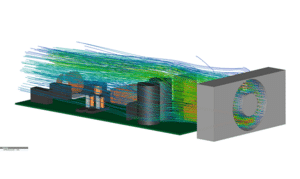
Multiphysics Solvers
Conjugate Heat Transfer
The CST Conjugate Heat Transfer (CHT) Solver uses CFD technique to predict fluid flow and temperature distribution in a system. The CHT solver includes the thermal effects from all heat transfer modes: conduction, convection and radiation, and can include heat sources from electromagnetic losses just as the Steady State and Transient Thermal solvers do. Devices such as fans, perforated screens, thermal interface materials can be directly modeled. Compact thermal models (CTM), such as two-resistor CTM, can also be considered. Applications like; electronics cooling: natural and forced convection of high-power electronics components and devices, such as PCBs, filters, antennas, chassis etc. with installed cooling devices such as fans, heatsinks etc.
Multiphysics Solvers
Mechanical
The CST Mechanical Solver can predict structures’ mechanical stress and deformation caused by electromagnetic forces and thermal expansion. It is designed to be used in conjunction with the EM and thermal solvers to assess the possible performance impact of the force and heating to the device. Applications like; filter detuning, PCB deformation, lorentz forces on particle accelerators.
Particles Solvers
Particle-in-cell
The CST Particle-in-Cell (PIC) Solver is a versatile, self-consistent simulation method for particle tracking that calculates both particle trajectory and electromagnetic fields in the time-domain, taking into account the space charge effects and mutual coupling between the two. This allows it to be used to simulate a huge variety of devices where the interaction between particles and high-frequency fields are important, as well as high-power devices where electron multipacting is a risk. Applications like; Accelerator components, Slow-wave devices, Multipaction.
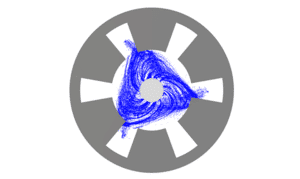
Particles Solvers
Particle Tracking
The CST Particle Tracking Solver is a 3D solver for simulating particle trajectories through electromagnetic fields. The space charge effect on the electric field can be taken into account by the Gun Iteration option. Several emission models including fixed, space charge limited, thermionic and field emission are available, and secondary electron emissions can be simulated. Applications like; Particle sources, Focusing and beam steering magnets, Accelerator components.
Particles Solvers
Wake Field
The CST Wakefield Solver calculates the fields around a particle beam, represented by a line current, and the wakefields produced through interactions with discontinuities in the surrounding structure. Applications like; Cavities, Collimators, Beam position monitors.
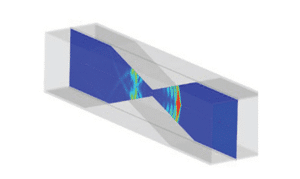
EMC and EDA Solvers
PCB
The PCBs and Packages Module of CST Studio Suite is a tool for signal integrity (SI), power integrity (PI), and electromagnetic compatibility (EMC) analysis on printed circuit boards (PCB). It integrates easily into the EDA design flow by providing powerful import filters for popular layout tools from Cadence, Zuken, and Altium. Effects like resonances, reflections, crosstalk, power/ground bounce and simultaneous switching noise (SSN) can be simulated at any stage of product development, from pre-layout to post-layout phase. CST Studio Suite includes three different solver types – a 2D Transmission Line method, a 3D Partial Element Equivalent Circuit (PEEC) method and a 3D Finite-Element Frequency-Domain (FEFD) method – and pre-defined workflows for IR drop, PI and SI analysis. Applications like; high-speed PCBs, Packages, Power electronics.
EMC and EDA Solvers
Rule Check
Rule Check is an EMC, SI and PI design rule checking (DRC) tool that reads popular board files from Cadence, Mentor Graphics, and Zuken as well as ODB++ (e.g. Altium) files and checks the PCB design against a suite of EMC or SI rules. The kernel used by Rule Check is the well-known software tool EMSAT. The user can designate various nets and components that are critical for EMC, such as I/O nets, power/ground nets, and decoupling capacitors. Rule Check relieves the tedium and removes the human error by examining each critical net in turn to check that it does not violate any of the selected EMC or SI design rules. After the rule checking is completed, the EMC rules’ violations can be viewed graphically or as an HTML document. Applications like; Electromagnetic compatibility (EMC) PCB design rule checking, Signal integrity and power integrity (SI/PI) PCB design rule checking.
EMC and EDA Solvers
Cable Harness
The CST Cable Harness Solver is dedicated to the three-dimensional analysis of signal integrity (SI), conducted emission (CE), radiated emission (RE), and electromagnetic susceptibility (EMS) of complex cable structures in electrically large systems. It incorporates a fast and accurate transmission line modeling technique for cable harness configurations in 3D metallic or dielectric environment. Hybrid simulation with the Cable Harness Solver and other high-frequency solvers allows structures containing complex cable harnesses to be simulated in 3D efficiently. Applications like; General SI and EMC simulation of cables, Cable harness layout in vehicles and aircraft, Hybrid cables in consumer electronics.
CST Data Exchange Options
CST Workflow Integrations
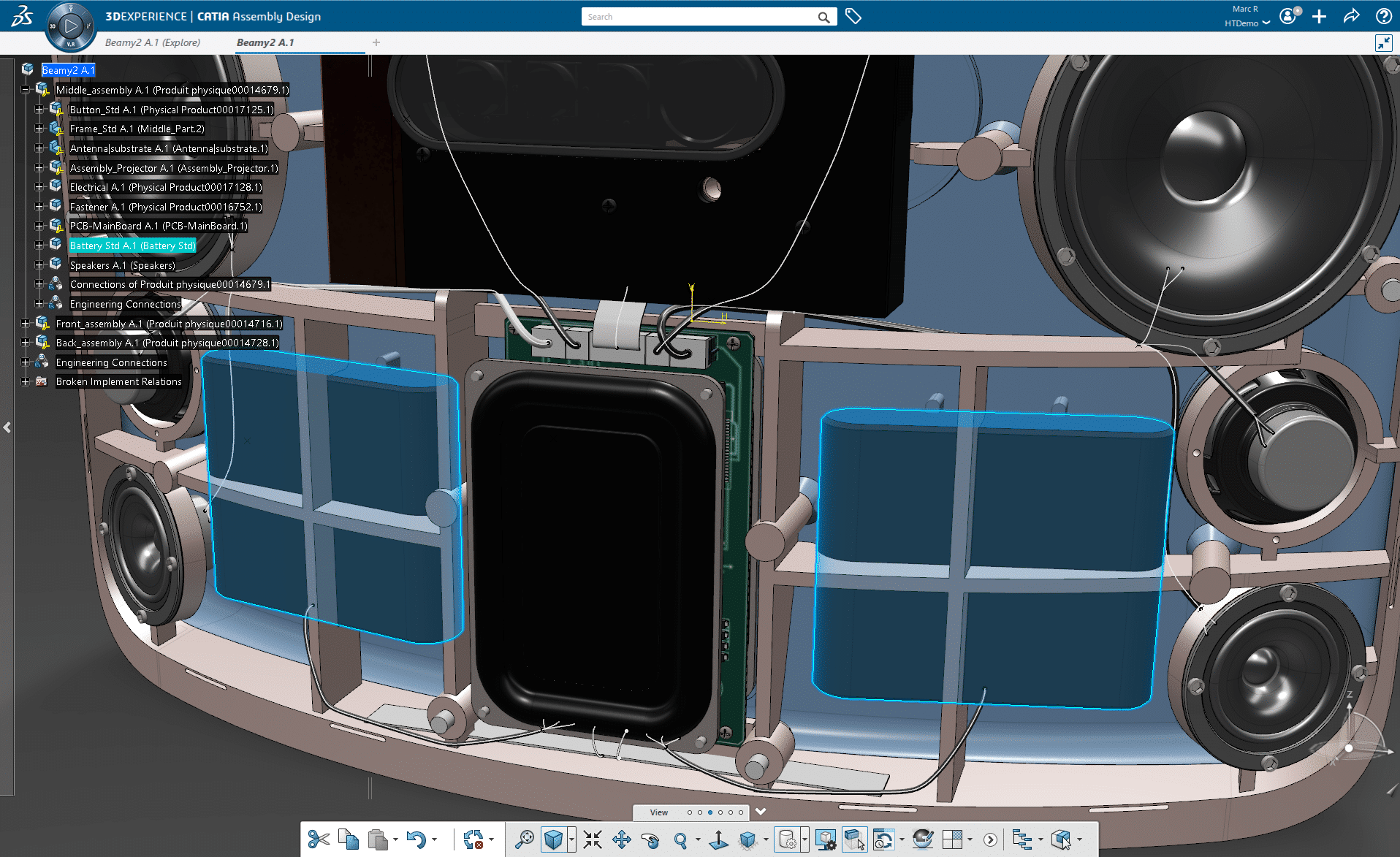
Data Exchange Options
The excellent workflow integration available within CST Studio Suite provides reliable data exchange options which help to reduce the design engineer’s workload.
CST Studio Suite is renowned for its superb CAD and EDA data import capabilities. The sophisticated healing mechanisms, which restore the integrity of flawed or non-compliant data, are particularly important as even one corrupted element can prevent the use of the whole part.
Fully parametrized models can be imported and design changes are instantly reflected in the simulation model due to the bidirectional link between CAD and simulation. This means that the results of optimizations and parametric design studies can be imported back directly into the master model. This improves workflow integration and reduces the time and effort needed to optimize a design. Integrations with CATIA, SOLIDWORKS & 3DEXPERIENCE Platform are possible.
CST Automatic Optimization
CST Optimization Routines an Algorithms
Automatic Optimization
CST Studio Suite offers automatic optimization routines for electromagnetic systems and devices. CST Studio Suite models can be parameterized with respect to their geometrical dimensions or material properties. This enables users to study the behavior of a device as its properties change. Users can find the optimum design parameters to achieve a given effect or fulfill a certain goal. They can also adapt material properties to fit measured data.
CST Studio Suite contains several automatic optimization algorithms, both local and global. Local optimizers provide fast convergence but risk converging to a local minimum rather than the overall best solution. On the other hand, global optimizers search the entire problem space but typically require more calculations. High-performance computing techniques can be used to speed up simulation and optimization for very complex systems, or problems with large numbers of variables. The performance of global optimizers in particular can be greatly improved with the use of distributed computing.
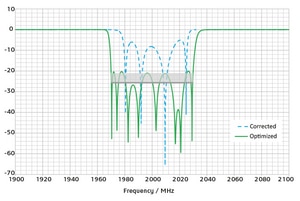
Covariance Matrix Adaptation Evolutionary Strategy
The Covariance Matrix Adaptation Evolutionary Strategy (CMA-ES) is the most sophisticated of the global optimizers, and has relatively fast convergence for a global optimizer. With CMA-ES, the optimizer can “remember” previous iterations, and this history can be exploited to improve the performance of the algorithm while avoiding local optimums. Suitable for: General optimization, especially for complex problem domains.
Trust Region Framework
A powerful local optimizer, which builds a linear model on primary data in a “trust” region around the starting point. The modeled solution will be used as new starting point until it converges to an accurate model of the data. The Trust Region Framework can take advantage of S-parameter sensitivity information to reduce the number of simulations needed and speed up the optimization process. It is the most robust of the optimization algorithms. Suitable for: General optimization, especially on models with sensitivity information.
Genetic Algorithm
Using an evolutionary approach to optimization, the Genetic Algorithm generates points in the parameter space and then refines them through multiple generations, with random parameter mutation. By selecting the “fittest” sets of parameters at each generation, the algorithm converges to a global optimum. Suitable for: Complex problem domains and models with many parameters.
Particle Swarm Optimization
Another global optimizer, this algorithm treats points in parameter space as moving particles. At each iteration, the position of the particles changes according to, not only to the best known position of each particle, but also the best position of the entire swarm as well. Particle Swarm Optimization works well for models with many parameters. Suitable for: Models with many parameters.
Nelder Mead Simplex Algorithm
This method is a local optimization technique which uses multiple points distributed across the parameter space to find the optimum. Nelder Mead Simplex Algorithm is less dependent on the starting point than most local optimizers. Suitable for: Complex problem domains with relatively few parameters, systems without a good initial model.
Interpolated Quasi Newton
This is a fast local optimizer which uses interpolation to approximate the gradient of the parameter space. The Interpolated Quasi Newton method has fast convergence. Suitable for: Computationally demanding models.
Classic Powell
A simple, robust local optimizer for single-parameter problems. Although slower than the Interpolated Quasi Newton, it can sometimes be more accurate. Suitable for: Single-variable optimization.
Decap Optimization
A specialized optimizer for printed circuit board (PCB) design, the Decap Optimizer calculates the most effective placement of decoupling capacitors using the Pareto front method. This can be used to minimize either the number of capacitors needed or the total cost while still meeting the specified impedance curve. Suitable for: PCB layout.
Electromagnetic Systems Modelling
CST Systems Assembly and Modelling
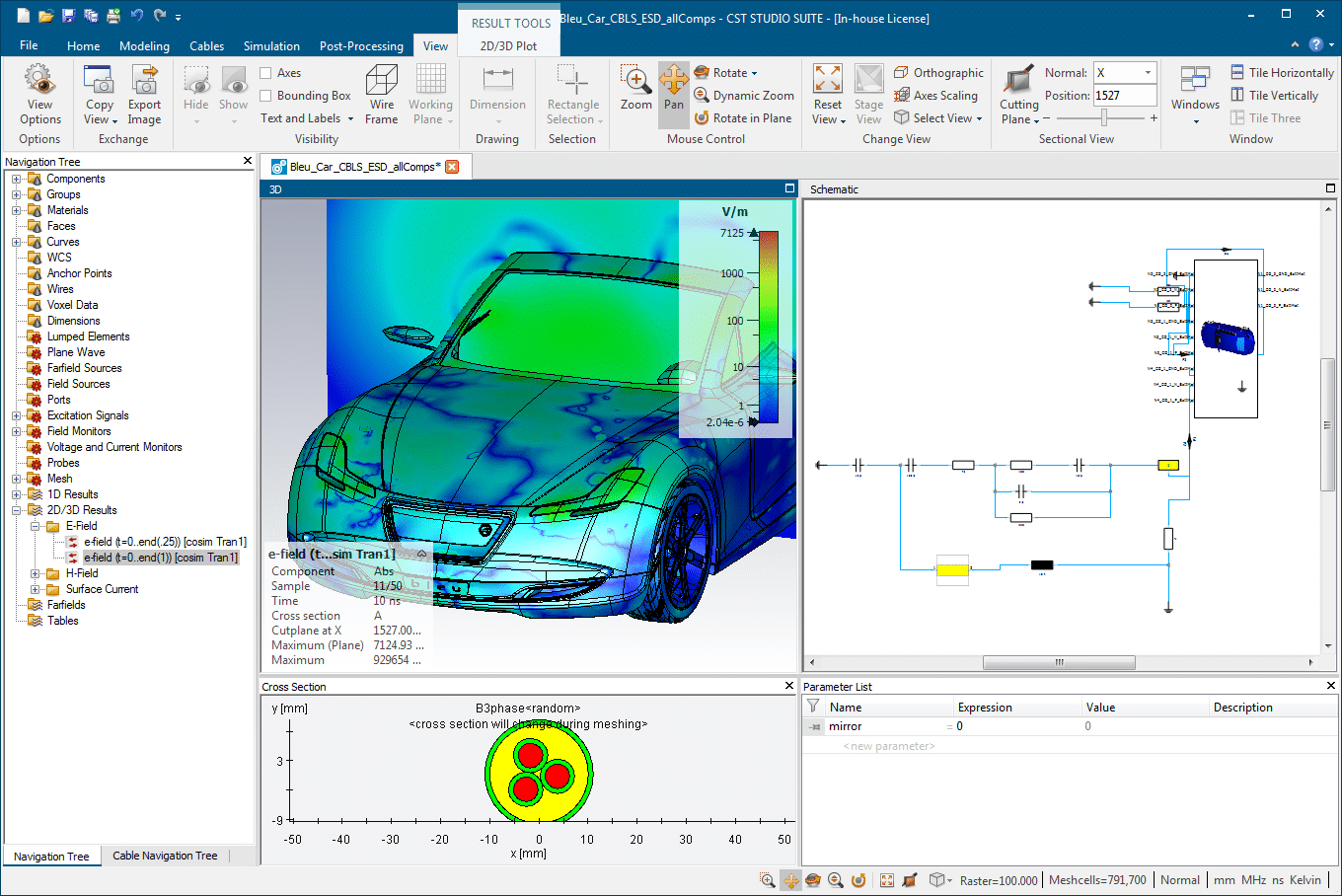
EM Systems Modelling
With System Assembly and Modeling (SAM), CST Studio Suite provides an environment that simplifies the management of simulation projects, enabling the intuitive construction of electromagnetic (EM) systems and straightforward management of complex simulation flows using schematic modeling.
The SAM framework can be used for analyzing and optimizing an entire device that consists of multiple individual components. These are described by relevant physical quantities such as currents, fields or S-parameters. SAM enables the use of the most efficient solver technology for each component.
SAM helps users to compare the results of different solvers or model configurations within one simulation project and perform post-processing automatically. SAM facilities the set-up of a linked sequence of solver runs for hybrid and multiphysics simulations. For example using the results of EM simulation to calculate thermal effects, then structural deformation, and then another EM simulation to analyze detuning.
This combination of different levels of simulation helps to reduce the computational effort required to analyze a complex model accurately.
User Interface
CST Electromagnetic Design Environment
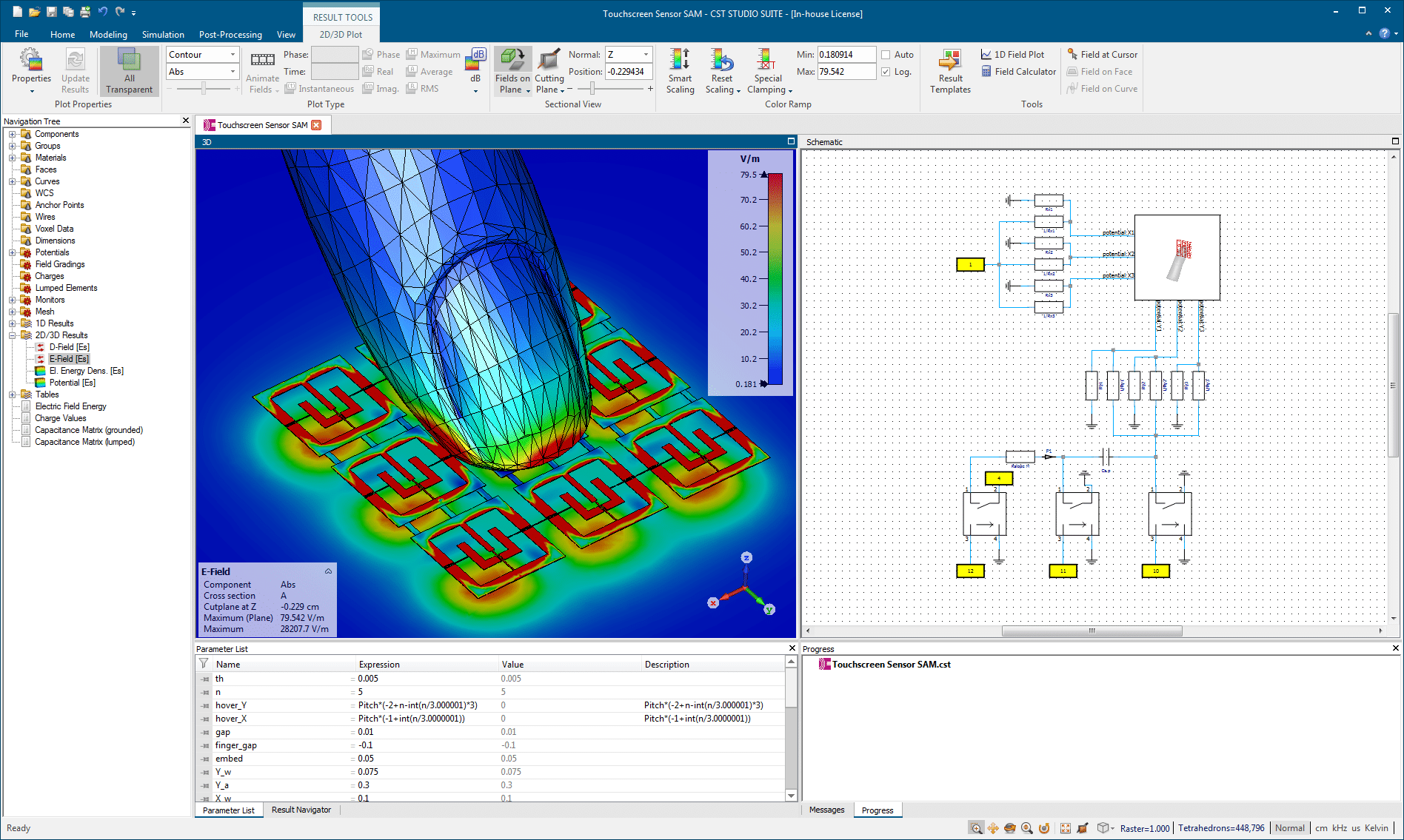
User Interface
The CST Studio Suite design environment is an intuitive user interface used by all the modules. It comprises a 3D interactive modeling tool, a schematic layout tool, a pre-processor for the electromagnetic solvers and post-processing tools tailored to industry needs.
The ribbon-based interface uses tabs to display all the tools and options needed to set up, carry out and analyze a simulation, grouped according to their position in the workflow. Contextual tabs mean that the most relevant options for the task are always just a click away. In addition, the Project Wizard and the QuickStart Guide provide guidance to new users and offer access to a wide range of features.
The 3D interactive modeling tool at the heart of the interface uses the ACIS 3D CAD kernel. This powerful tool enables complex models to be constructed within CST Studio Suite and edited parametrically with a simple WYSIWYG approach.


